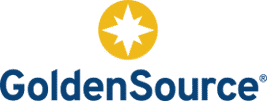Many of our clients who are using LSEG (f/k/a Refinitiv) have adopted its new, strategic DataScope Plus (DSP) platform. Others who have been using DataScope Equities (DSE) and/or DataScope Fixed Income (DSFI) are going through this process now.
In case you’re not aware, LSEG have sunset DSE and DSFI with a 2025 end-of-life and have advised licensees to move to DSP. Conceptually, this is a transformation between two very different data platform concepts.
DSE and DSFI (each previously on the market by Thomson-Reuters) deliver fixed format and tag-delimited format files respectively. Both have their very specific structures with record type mnemonics and field names only used by those historically grown data products. Loaders for DSE/DSFI have been catering for those proprietary characteristics and have evolved over the decades.
On the other hand, the DSP platform delivers data based on predefined or custom-configured field sets, with a data dictionary that is strongly related to DataScope Select (DSS), another widely used LSEG platform. Now, all supported asset classes are under one delivery mechanism.
Our clients typically see DSP and DSS as sister products, with DSS being used for smaller scheduled or ad-hoc data requests, and DSP being used for larger universes that need regular updating.
Whereas DSE and DSFI tied themselves into market closure times, DSP now allows frequent intra-day push updates.
So, what about the transformation process itself? Our recommendation: look at this as the implementation of a new data product. This provides the benefit – compared to a truly brand-new data vendor onboarding – to already understand the content requirements from the previous DSE/DSFI usage.
LSEG had provided subscribers with ‘best effort’ mapping sheets from DSE->DSP and DSFI->DSP.
The first step is to determine one’s current DSE and/or DSFI record type and field usage. LSEG’s mapping sheet then shows the likely corresponding DSP fields.
This constitutes a very good starting-point scope for the new DSP implementation.
While for many users of the legacy platforms, this undertaking may not have been the most desired piece of work in their planning for 2025, we suggest it be seen as an opportunity to review, clean up and streamline usage and code that has stacked up piece by piece over time. (For some, in fact, it has even become a black box.)
By virtue of this ‘strongly encouraged’ change, the result will be a slimmer, more maintainable piece of one’s data feed ecosystem that can once again be understood for the content it actually should deliver and the purposes the data actually should fulfill.
